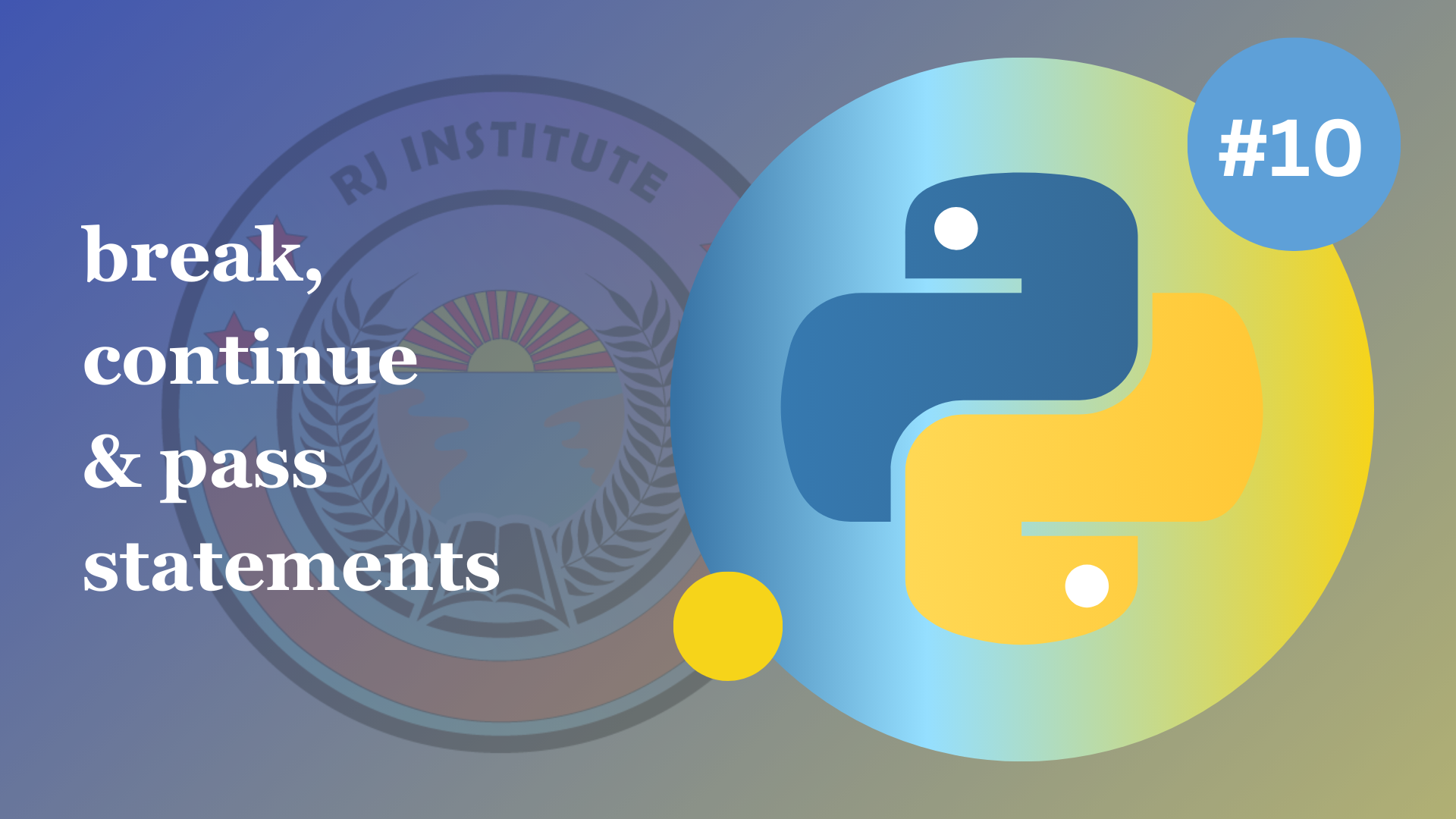

TOPIC: Python break, continue & pass statements
break statement
The break statement is a control flow statement used to exit or terminate a loop prematurely when a
certain condition is met.
It allows you to break out of the loop before it completes all its iterations. break is often used
when you want to exit a loop as soon as a specific condition is satisfied, avoiding unnecessary
iterations.
It's commonly used in loops like while and for to implement conditional exit based on certain
criteria.
Example
The break statement provides a way to control the flow of your loops and exit them when specific conditions are satisfied, making your code more efficient and responsive to certain situations.
continue statement
The continue statement is a control flow statement used to skip the current iteration of a loop and
continue with the next iteration.
It allows you to bypass specific iterations based on a condition without exiting the entire loop.
continue is often used when you want to avoid executing certain code for a particular iteration of a
loop but continue with the remaining iterations.
It's commonly used in loops like for and while to implement conditional skipping of iterations.
Example
The continue statement provides a way to selectively skip specific iterations within a loop while allowing the loop to continue with the next iteration. It is particularly useful for cases where you want to avoid certain processing steps under certain conditions.
pass statement
The pass statement is a null operation or a placeholder used when you need a syntactically correct
statement but don't want any code to be executed.
It serves as a way to indicate that something will be implemented in the future.pass is often used
as a temporary placeholder when defining empty functions, classes, or code blocks that will be
filled in later.
It is useful in situations where you want to create a valid structure but delay the actual
implementation.
Example
The pass statement allows you to create a valid and syntactically correct structure in your code while deferring the actual implementation. It is useful for situations where you want to outline the structure of your program before filling in the details.
Code as discussed in the video:
You can copy and run this code